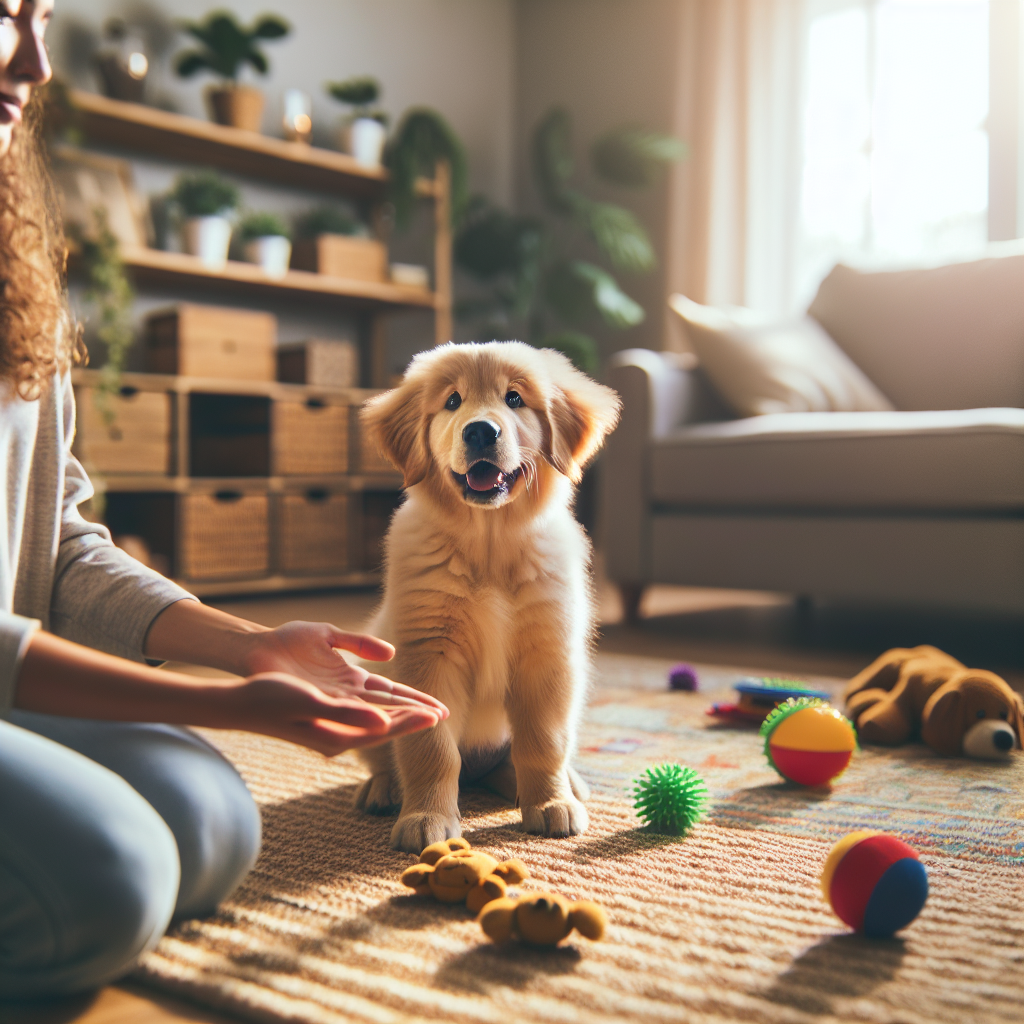How to Train Your Puppy: Dog Training Essentials
Welcoming a new puppy into your home is an exciting and joyful experience, yet it also comes with its own set of challenges. Understanding the *essentials of puppy training* can be the cornerstone to ensuring that your furry friend grows into a well-behaved and happy companion. Puppy training is not just about teaching basic commands; it's about building a strong, trusting relationship with your dog.
The early stages of a puppy's life are crucial for their development. During this period, puppies are like sponges, absorbing experiences and learning behaviors that will last a lifetime. **Consistency and patience** are key as you embark on this journey. By establishing a routine and setting clear boundaries, you can help your puppy understand what behaviors are expected and acceptable. Training your puppy is not just about discipline; it's about creating a safe, nurturing environment where your dog can thrive.
It is essential to start training early and to use positive reinforcement techniques, such as treats and praise, to encourage good behavior. This not only helps in teaching commands but also strengthens the bond between you and your puppy. Treat your furry friend to the joy they deserve with our range of delicious and nutritious dog treats. These can be a great motivator and a way to reward your puppy during training sessions.
Understanding Your Puppy's Behavior

Before diving into training methods, it is vital to first *understand your puppy's behavior*. Puppies, much like human toddlers, are full of curiosity and energy, and they often explore the world with their mouths. Chewing, biting, and barking are all part of a puppy's natural tendencies and should be addressed with understanding and patience.
**Socialization** is a key aspect of your puppy's development. During the early months, puppies are learning to navigate their environment and interact with other animals and humans. Exposure to a variety of people, places, and experiences is crucial for reducing fear and anxiety in unfamiliar situations. It's important to encourage positive interactions and gently correct any undesirable behaviors.
Puppies also communicate through body language, and being able to read your puppy's signals can greatly aid in training. For instance, a wagging tail often indicates excitement or happiness, while a tucked tail might signal fear or submission. Observing these cues can help you better respond to your puppy's needs and emotions.
Another significant behavior to note is *teething*. As puppies grow, they will naturally chew to relieve discomfort. Providing appropriate chew toys can help redirect this behavior and prevent them from gnawing on household items. By understanding these behaviors, you're better equipped to guide your puppy through their formative months, ensuring a smoother training process and a happier home environment.
Effective Puppy Training Techniques
Once you have a grasp on your puppy's behavior, it's time to implement some *effective training techniques* that can help mold them into a well-mannered companion. One of the most foundational methods is **positive reinforcement**. This involves rewarding your puppy with treats, praise, or playtime whenever they exhibit desirable behavior. The key is consistency and timing—ensure that the reward is given immediately after the correct behavior to reinforce the connection.
**Clicker training** is another popular technique that pairs a distinct sound with a reward. The clicker marks the exact moment your puppy performs the desired action, making it easier for them to understand what is expected. Over time, your puppy will associate the sound with positive outcomes, encouraging them to repeat the behavior.
**Crate training** serves dual purposes: it provides your puppy with a safe and secure space, and it can also assist in housetraining. Introducing your puppy to a crate should be a gradual process, ensuring they see it as a positive environment rather than a place of confinement. Start by allowing them to explore the crate with the door open, gradually increasing the time they spend inside with the door closed.
Lastly, **leash training** is essential for safe outdoor exploration. Begin by letting your puppy wear their collar and leash indoors to get used to the sensation. Practice short walks with gentle guidance, rewarding them for walking beside you without pulling.
Implementing these techniques with patience and consistency will help establish a strong foundation for your puppy's training journey. Remember, every dog is unique, and what works for one might need adjustment for another. Stay attentive and adaptable to your puppy's learning style for the best results.
Essential Commands for Puppies

Teaching your puppy essential commands is a crucial step in ensuring they grow into a well-behaved dog. These commands form the basis of good behavior and help keep your puppy safe in various situations. One of the first commands to master is the **"Sit"** command. This simple yet effective command can help manage your puppy's excitement and is often the starting point for more complex training techniques. To teach "Sit", hold a treat close to your puppy's nose, slowly move your hand up, and as their head follows, their bottom will naturally lower to the ground. As soon as they sit, reward them with the treat and some praise.
Another important command is **"Stay"**, which is essential for controlling your puppy in busy or potentially hazardous environments. Begin by asking your puppy to sit, then open your palm in front of you and say "Stay". Gradually increase the duration and distance before rewarding them, reinforcing patience and obedience.
The **"Come"** command is vital for recall, especially when your puppy is off-leash. It can prevent dangerous situations and allows for more freedom during walks. Start indoors with little distraction, kneel and call your puppy by their name followed by "Come", and reward them when they reach you. Consistency and positive reinforcement will make this a reliable command.
Additionally, teaching the **"Down"** command can help in calming your puppy and reducing hyperactivity. Begin with your puppy in a sitting position, hold a treat in your hand, and slowly lower it to the ground until they lie down. Once they do, reward them promptly.
These essential commands not only promote good behavior but also strengthen the bond between you and your puppy. Practice them regularly and with patience to help your puppy learn effectively and confidently.
Consistency and Patience in Training

When it comes to training your puppy, **consistency and patience** are key components that significantly influence the success of your training efforts. Puppies thrive on routine, and consistent training helps them understand what is expected of them, reinforcing good behavior over time. It is essential to establish a regular training schedule, ensuring that all family members use the same commands and techniques to avoid confusing your puppy.
Each training session should be short, engaging, and positive, as puppies have limited attention spans. Instead of overwhelming them with long sessions, opt for multiple brief interactions throughout the day. This approach not only keeps the training enjoyable but also enhances your puppy's ability to retain information.
Patience is equally important in puppy training. Remember that your puppy is learning everything from scratch, and it may take some time for them to fully grasp certain commands or behaviors. Avoid showing frustration or impatience, as negative emotions can hinder progress and damage the trust you are building with your puppy. Instead, celebrate small victories and gradually increase the complexity of the tasks.
Moreover, patience is crucial when dealing with setbacks or mistakes. Puppies, like children, will make errors along the way. Use these moments as learning opportunities rather than setbacks. Consistently reinforce positive behavior with praise and treats, and gently correct undesirable actions without resorting to harsh discipline.
By maintaining a consistent training routine and practicing patience, you are laying the groundwork for a well-behaved and happy dog. The time and effort you invest now will pay dividends as your puppy grows, ensuring they develop into a confident and obedient companion.
Common Puppy Training Challenges

Training a puppy can sometimes feel like a rollercoaster ride, filled with both thrilling successes and challenging obstacles. One of the most common challenges is *house training*. Puppies have small bladders and may not yet understand where it's appropriate to relieve themselves. Consistent routines and patience, as discussed earlier, are critical here. Be prepared for accidents and never punish your puppy, as this can create anxiety and confusion.
Another frequent issue is *nipping and biting*. While this behavior is natural for puppies, who explore the world with their mouths, it can become problematic if not addressed. Redirect their biting to appropriate toys and reinforce gentle play with positive reinforcement.
Socialization also presents its own set of challenges. Proper socialization is crucial for a well-rounded dog, but exposing your puppy to new experiences too quickly can be overwhelming. Gradually introduce them to new environments, people, and other animals, ensuring each experience is positive and rewarding.
Lastly, *separation anxiety* can be a significant hurdle. Puppies often become anxious when left alone, leading to destructive behavior or excessive barking. To help mitigate this, practice leaving your puppy for short periods and gradually increase the duration as they become more comfortable with being alone.
It's important to remember that every puppy is unique and may face different challenges. With time, consistency, and a nurturing approach, these obstacles can be overcome, leading to a harmonious relationship with your pet. And what better way to reward your puppy's progress than with a delicious treat? Treat your furry friend to the joy they deserve with our range of delicious and nutritious dog treats.






